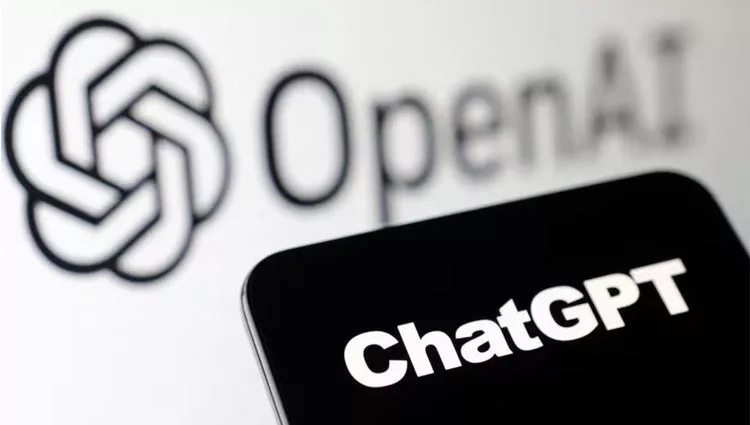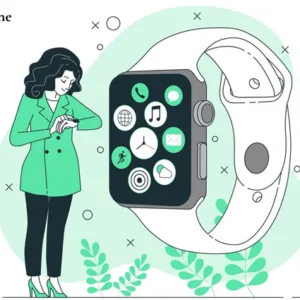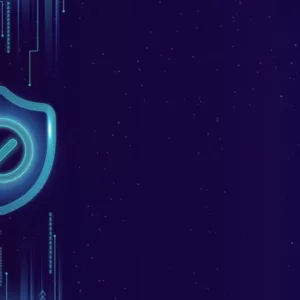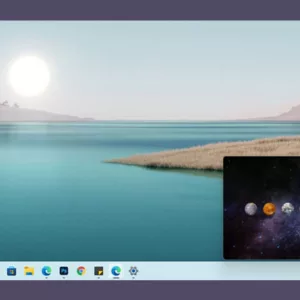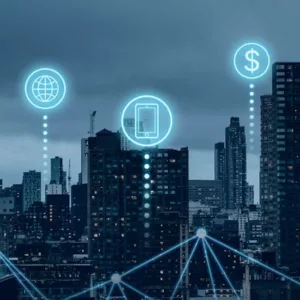If you were to search for the most searched thing on Google in 2023, chances are ChatGPT would come in the top 10 results. Since its launch, it has taken the online world by storm. ChatGPT is a language processing tool backed by AI that allows users to converse with the chatbot. You can use ChatGPT to ask questions, write essays, emails, and code. In a recent case, ChatGPT even helped a dog owner diagnose a potentially life-threatening disease in the dog.
ChatGPT is free to use for everyone as it’s still in its research and development phase. The team behind ChatGPT collects data from conversations to try and improve the AI tool as much as possible. As of Feb 1, 2023, there’s also a pro version that’s called ChatGPT Plus.
In this article, we’ll cover everything you need to know about ChatGPT.
Who Made the ChatGPT Website?
ChatGPT isn’t a single person’s creation. It was made by OpenAI and a research company. The first-ever version of ChatGPT was launched on November 30, 2022.
OpenAI is also famous for creating DALL-E-2, a famous AI art generator, and Whisper, an automatic speech recognition system.
Why is ChatGPT Getting Famous?
ChatGPT website may have changed the world as we know it. Within 6 months, it has garnered millions of monthly users. If everything goes well, it can change the internet.
Since its birth, several big figures in AI have shared their concerns. “ChatGPT is scary good. We are not far from dangerously strong AI,” said Elon Musk. In case you don’t know, Elon Musk was one of the founders of Open AI.
According to Sam Altman, OpenAI’s chief, “ChatGPT had more than 1 million users in the first 5 days of its launch.”
ChatGPT is the fastest-growing app of all time according to an analysis conducted by Swiss Bank UBS.
According to reports, ChatGPT had more than 100 million active users in January.
How to Use ChatGPT?
There’s no trick to using ChatGPT. As it’s free for everyone, all you need to do is go to chat.openai.com. You’ll be asked to create an account.
Once you’ve created an account, you’ll see a plain screen in front of you that looks a bit like this:
To start a conversation, all you need to do is ask a question. There’s no limit to how many questions you can ask. As ChatGPT is still in its research phase, you are free to use as many questions as you want.
Understanding Capacity Issues at ChatGPT
If you’ve been using ChatGPT since it launched, then you may have noticed that it has started having server issues.
As ChatGPT is free to use, more and more people want to take advantage of what it has to offer. As it can do so much, people want to take advantage before it becomes a paid service.
This is why users have started facing server issues. The website operates using a server, and when too many people use the website, it overloads the server.
If you’re getting a “We’re at capacity” error, then all you can do is wait for a bit. Try it again after a while and you probably will be able to access the ChatGPT website. You can also keep the tab open in one corner and refresh it over and over again.
But if you want unencumbered access to ChatGPT you can sign up for the pro plan. It has tons of improvements over the ordinary version and you get access to OpenAI’s most advanced LLM, GPT-4.
The cost for the pro plan is $20 per month.
Use Cases of ChatGPT
ChatGPT has a lot of uses apart from just answering simple questions. You can use this language model to write essays, describe art in detail, write book reviews, create AI art prompts, have philosophical conversations, and you can even ask it to write code for you.
Some of the most common use cases of ChatGPT include:
- Create an app
- Write code
- Build your resume
- Write formulas
- Summarize content
- Write a cover letter
- Write Excel formulas
- Write articles, blogs, web pages, and social media content.
How Does ChatGPT Work?
ChatGPT runs on a state-of-the-art language model architecture built by OpenAI. The GPT stands for Generative Pre-trained Transformers (GPT). The specific GPT that backs ChatGPT is generated from a model in GPT 3.5.
The latest GPT model called GPT-4 is far more sophisticated and provides far better responses. But, GPT-4 is not free, you will have to sign up for the ChatGPT Plus version.
GPT Models are trained on a huge amount of information that’s collected from the internet, books, news articles, and more.
To make the model where it is today, it was trained thoroughly using supervised learning as well as reinforcement learning. ChatGPT is incredibly unique because of the use of Reinforcement Learning from Human Feedback (RLHF).
Through RLHF, AI trainers offer GPT Model with conversations. In these conversations, they played the role of both parties, the users and AI assistants.
Difference Between ChatGPT and Search Engine
There’s a significant difference between ChatGPT and search engines. ChatGPT is a language model made to hold and maintain conversations with the end user.
A search engine, on the other hand, indexes web pages onto a server and presents information to the user based on what they search for. ChatGPT cannot search the internet for information, it uses the information it collected during data training to respond to users.
Compared to search engine results, the information provided by ChatGPT is more accurate and straightforward. Users won’t have to read long blog posts to find just one line worth of information.
ChatGPT makes it easier to find the information users want in an instant.
One place where ChatGPT falls short in comparison to search engines is it only has access to information up to 2021. Whereas Google has access to all the updated information as users all over the globe keep updating it.
If you ask ChatGPT “Who won the BGT trophy in 2023”, it won’t be able to come up with an accurate response.
Limitations of ChatGPT
ChatGPT is incredible. But, it does come with its fair share of limitations. These limitations include:
- Inability to answer questions that are worded in specific ways.
- Lack of quality in the responses.
- Sometimes the data is wildly inaccurate.
- Some responses are highly verbose.
While it is backed with AI, the model is intelligent enough to ask clarifications on questions a user asked. Instead, it will try to guess and provide answers that are rubbish.
Based on these limitations, StackOverflow has temporarily banned ChatGPT-generated responses to questions.
“The primary problem is that while the answers that ChatGPT produces have a high rate of being incorrect, they typically look like they might be good and the answers are very easy to produce,” said Stack Overflow moderators.
According to some industry leaders, these models are good at putting words together based on specific keywords. Most of the responses don’t make any sense from a statistical point of view.
One more limitation of ChatGPT is that data is limited to 2021. The chat model doesn’t have any awareness of recent events or news, so it can’t formulate responses to questions about recent events. This is why some questions result in no answer or rubbish answer.
Moreover, if you want it to provide the source for data it won’t be able to do so.
What are Some People’s Concerns About ChatGPT?
There’s a lot of concern about AI chatbots replacing or hurting human intelligence. Moreover, ChatGPT can write articles, news, and blogs within seconds, eliminating the need for a human writer. However, not all the information is accurate.
It can also have adverse effects on students. Students can ask the AI model to write full essays, making it easier for them to cheat, or skim their assignments. Some school districts have blocked students’ access to ChatGPT.
Another concern with AI chatbots is that they can easily spread fake or wrong information. As the chatbot is not searching the internet for information, it’s easy to provide fake information.
ChatGPT itself states “My responses are not intended to be taken as fact, and I always encourage people to verify any information they receive from me or any other source.” OpenAI itself also notes that ChatGPT sometimes writes “plausible-sounding but incorrect or nonsensical answers”.
Is There a Tool That Detects ChatGPT Text?
Schools, universities, and colleges are concerned about ChatGPT being used for cheating. This is why more and more people want a ChatGPT text detector. OpenAI itself decided to come up with an answer to this problem. They released a “somewhat imperfect” free tool to target these issues.
OpenAI’s ‘classifier’ tool can identify ChatGPT text, but only 26% of the time. Furthermore, it also provides false positives 9% out of all time. It has even identified human-written content as AI content.
There are other ChatGPT text detector tools in the market, such as:
- GPT-2 Output Detector
- Writer AI Content Detector
- Content at Scale AI Content Detection
Alternatives to ChatGPT
While ChatGPT has garnered all the attention and is all the buzz in the market, there are some other options in the market. Based on your need, you may even be able to find something better than ChatGPT.
While ChatGPT can do so much for so many users, there are some major downsides to the AI chatbot, including the free version is always overloaded.
If your only goal to use ChatGPT is to create content, there are other options you can try, such as:
- Jasper
- WriteSonic
- Bing Chat
- YouChat
- Chatsonic
Can ChatGPT Pass Benchmark Exams?
Yes, ChatGPT can pass several benchmark exams. A professor at Pennsylvania’s business school used ChatGPT to take an MBA exam and the results were impressive.
Not only ChatGPT was able to pass the exam, but it also ended up scoring B to B-. The team at OpenAI also tested the chatbot’s ability to pass other benchmark exams, the results were often on the low end.
GPT-4 changed that and now the results are far more impressive. Here are some examples that you should see:
History of Microsoft and ChatGPT
Microsoft was one of the first investors in OpenAI, and they were the research company behind ChatGPT. In 2019, Microsoft invested $1 billion, and $2 billion soon after. In January, Microsoft solidified its partnership with OpenAI through a multi-year, multi-billion dollar investment.
There’s no clarification on the exact investment value, but according to some sources the amount is to be around $10 billion spanning multiple years.
OpenAI will be taking advantage of Microsoft Azure services for cloud computing needs.
Microsoft has leveraged its partnership with OpenAI to reshape its own Bing search engine and improve its browser.
On Feb 7, Microsoft showcased the new Bing search engine that is backed by the next-generation OpenAI language model that is specifically for search.
Bing Chat (Microsoft’s version of ChatGPT) is not available to general users. But those who tested it gave it thumbs up on most features.
Bing Chat’s standout feature is its integration with ChatGPT. During its announcement, Microsoft shared that Bing Chat is powered by the next-gen version of OpenAI’s large language model, thus making it “more powerful than ChatGPT”.
Bing Chat is running on GPT-4, the most advanced Open AI model.
As Bing Chat is directly linked to the internet, it can search the web to provide information on recent events. Essentially, it makes it more accurate than ChatGPT. Plus, Bing Chat links back to all the sources it sources information from, so there’s less room for misinformation.
Bing Vs. ChatGPT
Bing Chat operates on a more advanced large language model, GPT-4, so it is more efficient and capable than the ordinary version of ChatGPT.
Plus, Bing Chat can access the internet so it provides better answers compared to ChatGPT.
Google Bard vs ChatGPT
Bard is Google’s answer to ChatGPT. It’s supposed to be the biggest ChatGPT alternative, but it has failed to impress. On Feb, 6 Google rolled out its AI chat service that’s still in its experimental phase. It’s been over a month since Google announced Bard, but its access is fairly limited. There’s a waitlist users can jump on if they want to try out Bard.
Bard uses a lightweight version of Google’s Language Model for Dialogue Applications (LaMDA). It collects information from the web to articulate a response.
Compared to that ChatGPT doesn’t have internet access to formulate a response.
Google’s chat service has had a complicated launch. During the demo, Bard delivered inaccurate information about the James Webb Space Telescope.
Currently, the only thing that Bard has going for itself is its ability to search the web. ChatGPT blows Bard out of the water. ChatGPT produces answers faster and with much ease compared to Bard.

